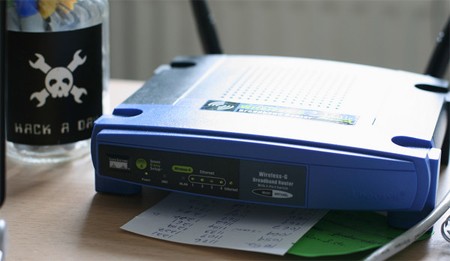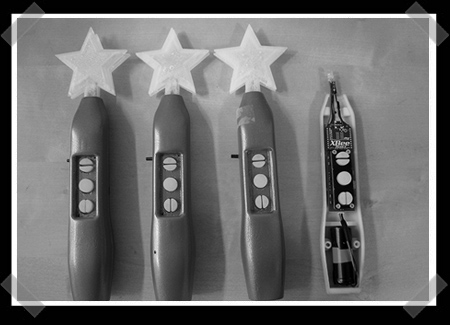[NRP] sent us a few of his projects. The most notable of the bunch was a school project funded by Disney. They were to make some kind of interactive entertainment for people waiting in line for rides. They decided on a wand style interface. Each wand has an accelerometer, an IR LED for tracking, an XBee unit, and a few buttons for interaction. They wrote some custom games and a multi person white board to test it all out. You can see those in action, along with a space themed pong game in the video after the break. Even though this was funded by Disney, you can still find all the source code and schematics, available for free.
Wireless Hacks1098 Articles
D-Link Adds Captcha To Routers

D-Link is adding captcha support to its line of home routers. While default password lists have been abundant for many years, it was only recently that we started seeing the them implemented in malware. Last year, zlob variants started logging into routers and changing their DNS settings. It’s an interesting situation since the people who need the captcha feature are the ones who will never see it, since they won’t log in to change the default password.
[photo: fbz]
GPS Logger With Wireless Trigger

[Matthew] sent us his group’s final project, where they built a nice GPS logging system. Not only can it simply log the GPS coordinates on a predetermined interval, it can also be triggered to make an entry by a wireless device. In this example, they use a camera. This allows them to then upload all the GPS information and pictures to places like Google Earth.
They are using an ATmega644, with an LCD, SD card, and GPS unit. They had to do a little hacking on their camera to add the wireless transmitter, which triggers the logger. You can see not only the cost break down and source code for the project, but also a map with lots of geotagged photos. This is the kind of thing we can almost see as a standard item in the future.
Home Made R/C System
[youtube=http://www.youtube.com/watch?v=HI3KNy9GKB8]
[dunk] sent his home made Radio Control system. It is constructed from a Playstation 2 controller, an Atmega 2561, microcontroller, some RF modules and various servos and motors. It seems to work pretty well. You can get all the schematics and source code on his site. Several people have submitted a similar project which involves an iPhone and a helicopter, but that one is a bit dubious, mainly due to it’s lack of detail.
WSPRing Across The Atlantic

Host of the Soldersmoke podcast, [Bill Meara], contributed this guest post.
WSPR is a new communications protocol written by radio amateur and Nobel Prize winner [Joe Taylor]. Like the very slow QRSS system described in a previous post, WSPR (Weak Signal Propagation Reporter) trades speed for bandwidth and allows for the reception of signals that are far below the level of radio noise. WSPR takes “low and slow” communications several important steps ahead, featuring strong error correction, high reliability, and (and this is really fun part) the automatic uploading (via the net) of reception reports — [Taylor]’s WSPR web page constantly gathers reports and produces near real-time Google maps of showing who is hearing who. The WSPR mode is very hack-able: [Bill Meara] is running a 20 milliwatt homebrew transmitter from Rome, Italy that features an audio amplifier from a defunct computer speaker pictured below. This contraption recently crossed the Atlantic and was picked up by the Princeton, New Jersey receiving station of WSPR’s esteemed creator, [Joe Taylor]. Continue reading “WSPRing Across The Atlantic”
Linksys IP Cam Hacking

GNUCITIZEN has posted information on linksys wireless IP camera hacking. It turns out that some models send the administrator user name and password to the computer when the setup wizard requests a connection. In theory, someone could send the request and harvest your passwords wirelessly. This seems like a pretty careless oversight. We would think that linksys will probably remedy this before too long.
Update: Part 2 has been posted.
Update: Part 3 has been posted.
RF Modem + 250mW Amplifier

[Trax] sent in his writeup on this RF modem with built in 250mW amplifier. The original power of the RF transceiver was around 10mW, his final results after testing were nearly 250mW. He was able to to easily transmit data over 1000 meters using his test setup. He states that he was actually able to achieve this without an antenna on the receiving side. That’s pretty impressive performance. It’s also worth noting that he soldered all of the components in place using a home clothing iron and some soldering paste. That must have been fairly tedious.











